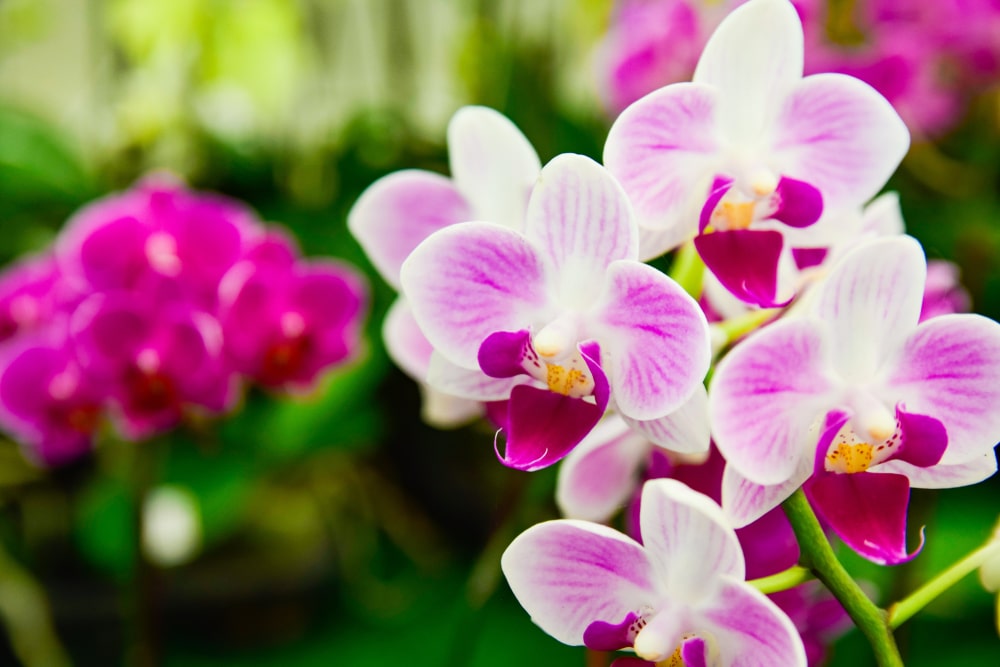Last week, I discussed what to do with citrus over the winter. This week, I’ll discuss what to do with orchids over the winter.
How Many Species? Really?
First, a little background: there are over 30,000 naturally occurring species of orchids, with well over 100,000 manmade hybrids. 30.000??? That’s right!
Orchids are the single most prominent family of blooming plants globally and are found on every continent except Antarctica. About 70% of orchids are epiphytic. Epi means air, and phyte means plant. An epiphyte is a plant that grows in trees, not in the ground.
Parasite or Epiphyte – What’s the Difference?
Now, an epiphyte is NOT a parasite. A parasite grows on other plants and actually takes all or most of its nutrition from the host plant. An epiphyte, on the other hand, simply uses another plant to lift it up where the light and air circulation is better so it can make its own food efficiently.
Let There Be Light – And Moisture in the Air!
Most orchids commonly grown indoors are epiphytic, and that will affect their care. Some orchids can get by on bright, mostly indirect light, while others need more light, so you do need to know exactly what kind of orchids you’ve got.
One thing they all have in common, however, they need moisture in the air. The rainforest to which they are native has about 80% humidity, and our average indoor humidity is about 10%. You can use humidifiers or pebble trays or mist them a couple of times a day; when misting a plant, remember to put your mister on a “fine” spray and mist the air over and around it. Don’t spray directly on the plant so it drips off—that can mess up your watering.
Use Orchid Potting Medium – NOT Potting Soil
Because most of our orchids live in trees, they aren’t potted in soil. You can get a bag of orchid potting medium at most garden centers—it usually contains chunks of bark and maybe some perlite. Because they don’t grow in the ground, orchids should never stand in water longer than a few minutes when you water them. I usually let mine stand for about five minutes, then pour the excess water.
Use The Right Fertilizer
The American Orchid Society recommends feeding orchids with an even-numbered fertilizer (20-20-20), half strength, half as often as the fertilizer directions say. Because orchids grow in trees, their roots are NOT in nutrient-rich soil, so half-strength works.
Keep It Simple
Caring for my orchids over the winter is actually fairly simple. I provide the humidity, and I’m blessed with very bright windows. If you’re not, then grow lights work fine. Orchids tend to be very light-responsive and should bloom at least once or more a year (depending on the variety) if they’re in the right light.
If you’ve got a plant that looks good with pretty green leaves but has been more than a year since it last bloomed, chances are it needs a bit more light. Remember to inch it into more light gradually. Too much direct mid-day sun could scorch the foliage.
Enjoy Your Beautiful Orchids
When they bloom, they’re beautiful, and you’ll feel such a sense of accomplishment!

